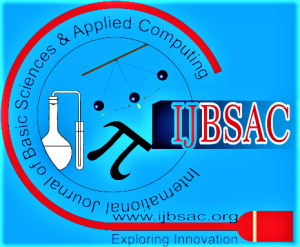![]()
Prime Radicals and Completely Prime Radicals in Ternary Semirings
D. Madhusudhana Rao1, G. Srinivasa Rao2
1Dr. D. MadhusudhanaRao, Lecturer and Head, Department of Mathematics, VSR & NVR College, Tenali, A. P. India.
2G. Srinivasa Rao, Asst. Prof., Department of Mathematics, Tirumala Engineering College, Narasarao Pet, A. P. India.
Manuscript received on February 01, 2015. | Revised Version Manuscript Received on February 23, 2015. | Manuscript published on February 20, 2015. | PP: 1-5 | Volume-1 Issue-4, February 2015
Open Access | Ethics and Policies | Cite
© The Authors. Published by Lattice Science Publication (LSP). This is an open access article under the CC BY-NC-ND license (http://creativecommons.org/licenses/by-nc-nd/4.0/)
Abstract: In this paper we introduced prime radicals and completely prime radicals in ternary smearing. It is proved that : If A, B and C are any three ideals of a ternary semiring T, then i) A ⊆ B ⇒ A ⊆ B , ii) if A ∩ B∩ C ≠ ∅ then ABC = A B C A B C ∩ ∩ ∩ ∩ = iii) A = A . Further it is proved that an ideal Q of ternary semiring T is a semiprime ideal of T if and only if Q =Q. It is proved that if P is a prime ideal of a ternary semiring T, then ( )n P = P for all odd natural numbers n∈N and if A is an ideal of a ternary semiring T then A ={x ∈ T: every m-system of T containing x meets A} i.e., A = { x T M x A ∈ ≠ ∅ : ( )∩ }. Mathematical Subject Classification: 16Y30, 16Y99
Keywords: left simple, lateral simple, right simple, simple, duo ternary semiring, semisimple ternary semiring, globally idempotent.
